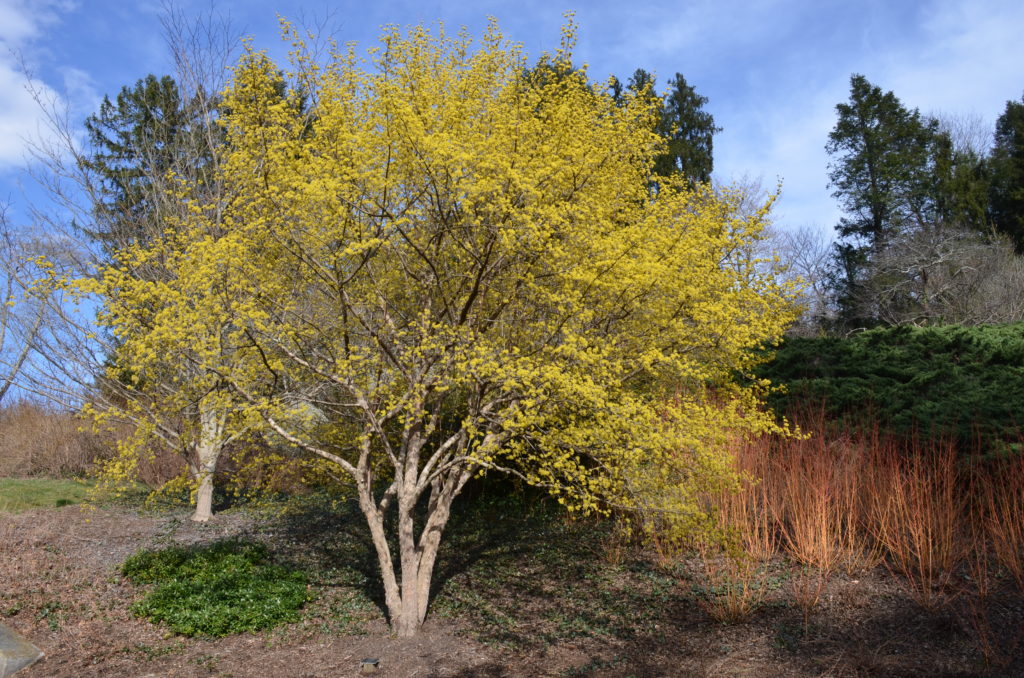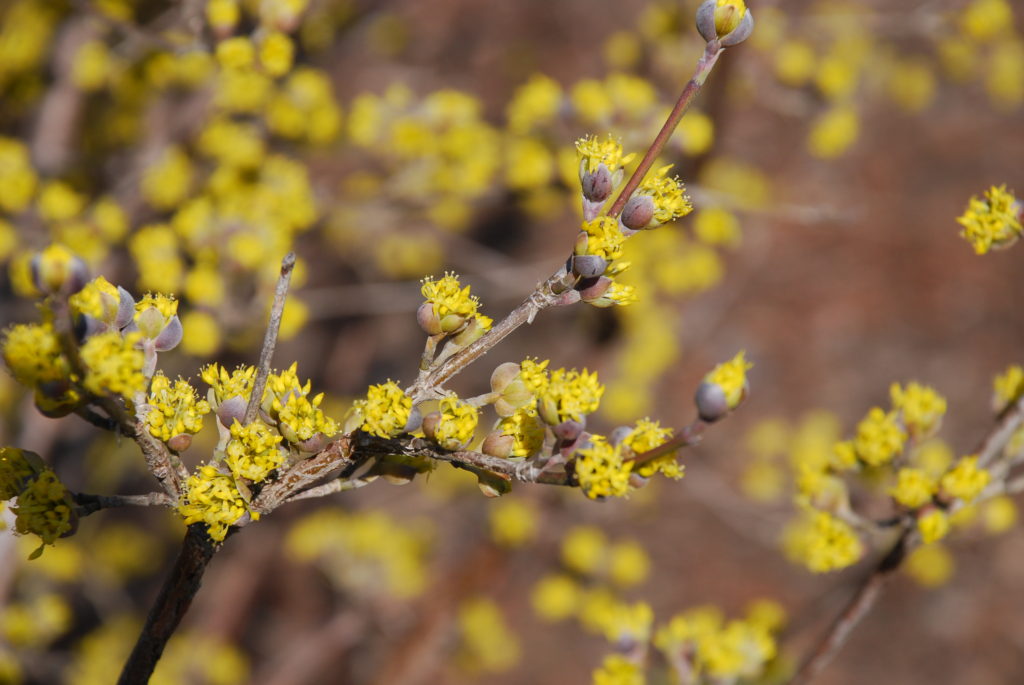
Starting in late February, Japanese cornel (C. officinalis) burst into bloom with clusters of yellow flowers (zones 5–8). Native to Japan, China, and Korea, this lovely small tree (or large shrub) is one of a few plants that is an early harbinger of spring. Here are notable cultivars:
‘Sunsphere’ grows 20-25 feet high and is an exceptional heavy bloomer with its bright yellow flowers. Sunsphere was found and named by Mike Stansberry in Knoxville, TN. Flowers are rarely injured by low night wintry temperatures still common in late February and March across the Southern Appalachian region (USDA zones 6 and 7). This small tree can be purchase from Beaver Creek Nursery in Knoxville, TN as well as from other on-line nursery source

‘Kintoki’ Japanese cornel dogwood (Cornus officinalis ‘Kintoki’) is another fine selection. Kintoki grows more as a large shrub than tree-like @ 15 to 20 feet tall and wide. Training this shrub into a small tree is not difficult. Early spring masses of brilliant yellow blooms are followed by stunning red, cherry-like fruit that ripen in late August.
Kintoki is rated as one of the better cornelian cherries in the southeast U.S. The plant is notable for its heavy flowering, exceptional high gloss seasonal foliage, and exquisite exfoliating bark that gets better with the passing of time.
Japanese cornel grows in any average well-drained soil and in full sun to partial shade. Spring-summer foliage is dark green, and autumn colors varying from light yellow to reddish purple before falling. As the grayish outer bark ages, it chips off in tiny strips, exposing the yellow-orange inner wood. In late summer the cherry red drupe fruits have colored up and are consumed by foraging birds.

 Posted in
Posted in 
